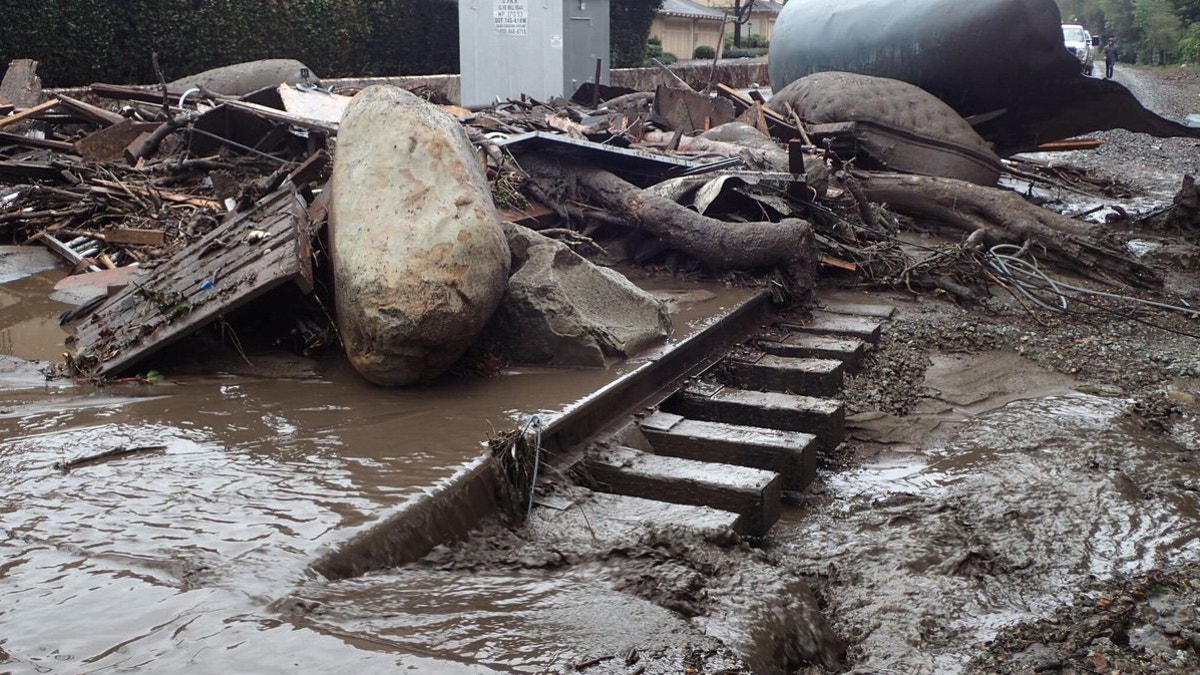
LOS ANGELES – Torrents like the ones that carved deadly and destructive paths through Montecito, California, during a powerful storm early are commonly described as mudslides, but geologists and emergency workers call them debris flows.
Debris flows pose a significant threat when rain falls in the aftermath of wildfires such as the inferno that scorched more than 440 square miles (1,140 square kilometers) in two Southern California counties last month and destroyed and damaged hundreds of homes and other structures. Tuesday's debris flows killed at least 13 people and injured at least 25.
They happened when water that would have otherwise been absorbed or at least slowed by vegetation instead instantly ran down creeks and other drainage areas, picking up soil, rocks, trees — and potentially growing powerful enough to carry massive boulders and vehicles.
Their speed can exceed 35 mph (56 kph), according to the U.S. Geological Survey.
The aftermath in Montecito showed the destructive power of the debris flows: Home foundations swept bare, tangled piles of shattered debris, head-high boulders strewn about and the deaths of residents.
"Water is very powerful," said Amber Anderson, a spokeswoman for Santa Barbara County. "This is a massive amount of debris carried by water."
The geological survey said many deaths from debris flows occur when people are asleep, just as happened in Montecito, where heavy rain fell in a short period of time a few hours after midnight.
The geological survey urges people to stay awake when conditions may be dangerous, monitor broadcast storm reports and listen for unusual sounds that could indicate something is moving.
That's what caught the ear of Thomas Tighe, a Montecito resident who was outside around 3:30 a.m. checking his home's downspouts during a downpour.
"I came around the house and heard a deep rumbling, an ominous sound, that I knew was the boulders moving as the mud was rising," he said.
The amount of material that can be transported in a debris flow can be staggering.
After a 2009 wildfire burned more than 250 square miles (647 square kilometers) in the San Gabriel Mountains above foothill suburbs of Los Angeles, a geological survey study found that some of the burned watersheds could release up to 100,000 cubic yards (76,500 cubic meters) of material — enough mud and rock to cover a football field 60 feet (18 meters) deep.
Among dramatic historic examples in the mountains of Southern California, a 1934 storm unleashed runoff so intense that 30 people were killed, more than 480 homes were destroyed and a nearly 60-ton (54-metric ton) boulder was pushed out of a canyon. On Christmas Day in 2003, a storm over mountains scarred by wildfires unleashed a debris flow that killed 16 people gathered at a church facility in a canyon.
___
Associated Press writer Christopher Weber in Los Angeles contributed to this report.




















